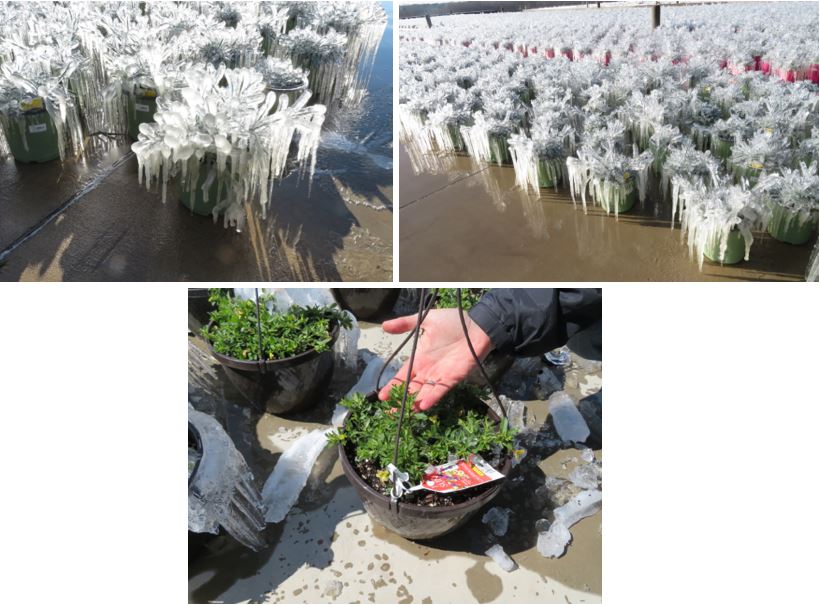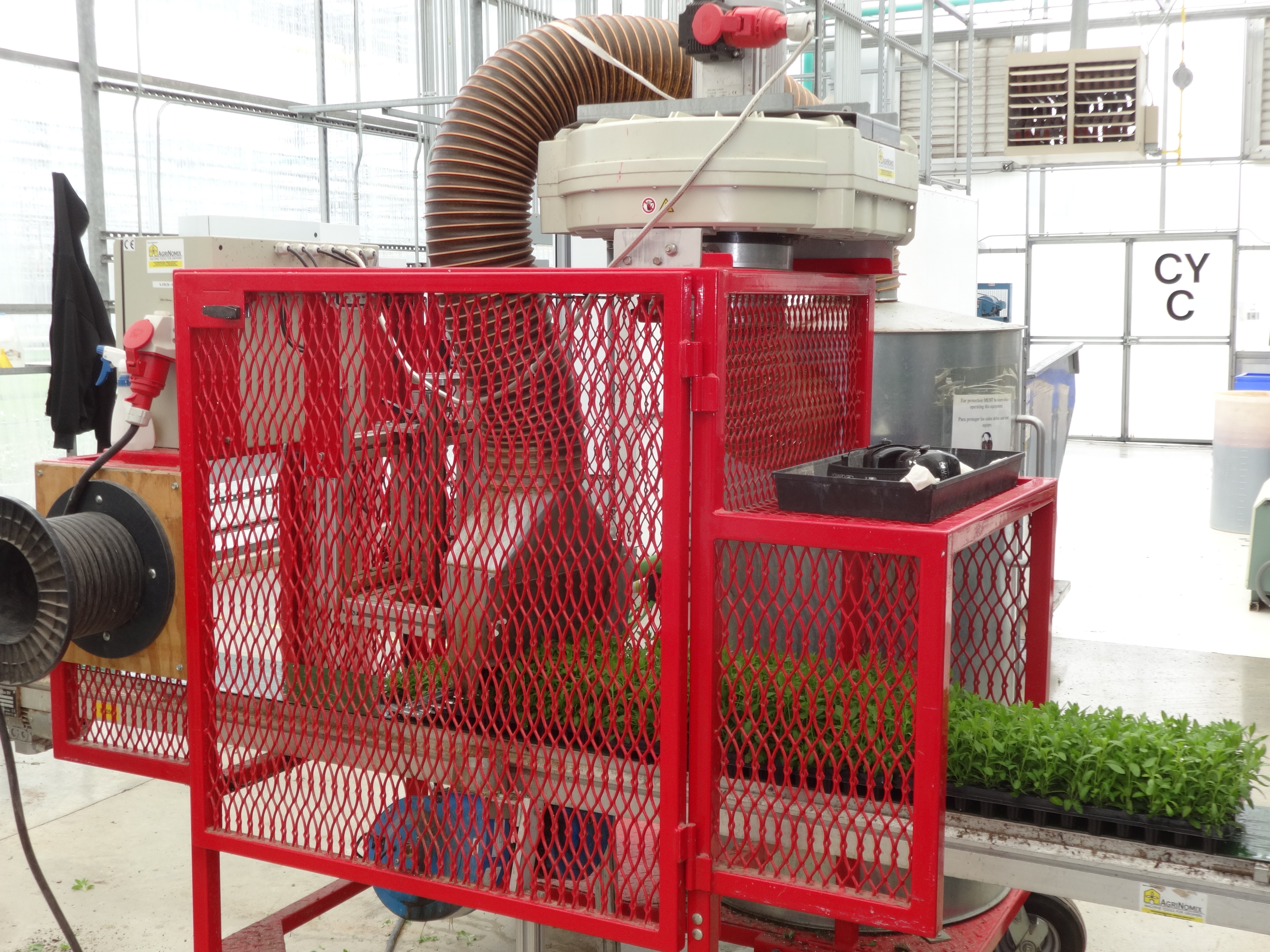Holding greenhouse crops – When temperature and PGRs don’t suffice
Greenhouse growers may have to move plants outdoors, cut plants back or throw plants away to make room for new material.

Many greenhouse producers and retailers are having to hold onto crops longer than anticipated because of restrictions in place from COVID-19, the infectious disease caused by novel coronavirus, pandemic. In a previous article, we focused on two strategies to hold greenhouse crops: lowering the temperature and using plant growth retardants. At least in Michigan, the short- to mid-term forecast is for cool and cloudy weather, so lowering the greenhouse temperature should be feasible. Extension growth is also inhibited by limiting water and fertilizer; a recent e-GRO article provides useful information on this topic.
Unfortunately, using temperature, growth retardants, water, nutrition and other techniques are only useful for two, sometimes three weeks. At some point, plants become too large for their containers or too ripe for their market. These plants also become more difficult to manage because of greater water need, more challenges managing nutrition and pH, and increased pathogen pressure from tight spacing and flowers that shed. They also occupy space, which is at a premium this time of year.
At this point, there are three additional options for holding plants in the spring.
Move cold-tolerant plants outdoors
Move cold-tolerant plants (those with a low base temperature) that can tolerate a light frost outdoors if you have the space. If time allows, acclimate these plants to progressively cooler temperatures before moving outdoors. Do not move plants outside from a warm greenhouse if the forecast is for frost or freezing temperatures for the following three or four days. Cool but non-freezing or frost temperatures acclimate the plants to tolerate a frost.
If temperatures are forecast to dip below about 37 degrees Fahrenheit and the night is clear with no wind, expect a radiant frost. Any time a radiant frost or freezing temperatures are forecast, move plants to a protected area or cover them with a lightweight Reemay cloth, floating row cover or frost cover.

An alternative to covering is to sprinkle plants continuously if water is available. This approach will protect plants from freezing since water releases heat as it freezes and prevents the plant temperature from dropping below 32 F. Start sprinkling when the air temperature is 36 F on clear nights or better, use an IR thermometer and start sprinkling when the lowest observed leaf or flower temperature is 32 F. The plants at Metrolina Greenhouses in the photos below survived temperatures in the low 20s for several hours without damage and were fine once the ice melted.

Argyranthemum, bidens, calibrachoa, pansy, petunia and snapdragon can be moved outside first, as they are the most-cold tolerant (once acclimated) of temperatures as low as 25 to 32 F with some protection. When the chance of temperatures dipping below freezing are much less likely, diascia, dianthus and nemesia can be moved outdoors. Lastly, bracteantha, lobelia, stock and verbena can be moved outdoors when temperatures are not likely to drop below 35 F. There is certainly risk with moving plants outdoors because some series and cultivars are more or less temperature sensitive than others, and a hard freeze can kill or damage plants. However, this strategy can help buy time and open up precious greenhouse space. To learn more about our previous research growing cold-tolerant crops outdoors and in high tunnels read the article, “High tunnel and outdoor production of cold-tolerant bedding plants.”
Cut/mow/trim plants
Growers can manually cut plants back or use a trimming machine. Manual cutback can require a lot of labor but cutting back can decrease the amount of space plants will subsequently occupy, or more importantly, allow new growth for later sale. Time to re-flower depends on the crop and growing conditions and may be as little as a few weeks but will be temperature dependent. Most annual bedding plants will re-flower after trimming. In contrast, many early-season herbaceous perennials in flower may not re-flower.
If you trim the plants, do your best to remove all cut-off material (leaves, stems and flowers). Any plant debris left is subject to botrytis. Here is a recent article on managing botrytis using fungicides. A spray application of Pageant Intrinsic (BASF) may have an added benefit of slightly increasing cold tolerance if applied several days before exposure to low temperatures.

Throw plants away
No one ever wants to dump plants, but if you have plugs and liners ready to be transplanted and your greenhouse is full, consider discarding ripe plants that will not sell in the time to regrow from a cutback. It may be better to cut your losses early, so that space becomes available for new plant material scheduled for a later market.



 Print
Print Email
Email

